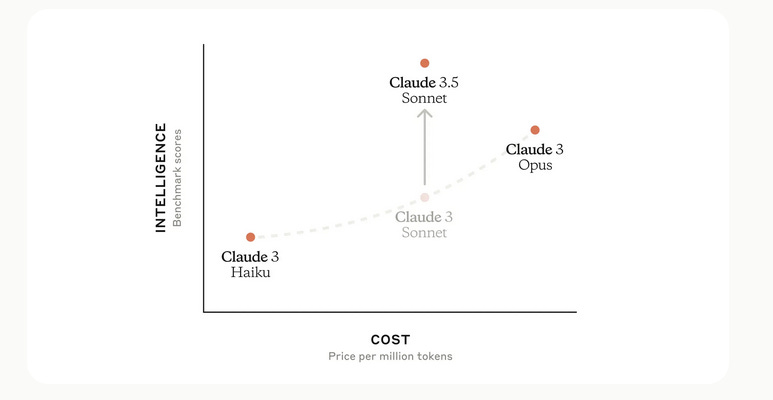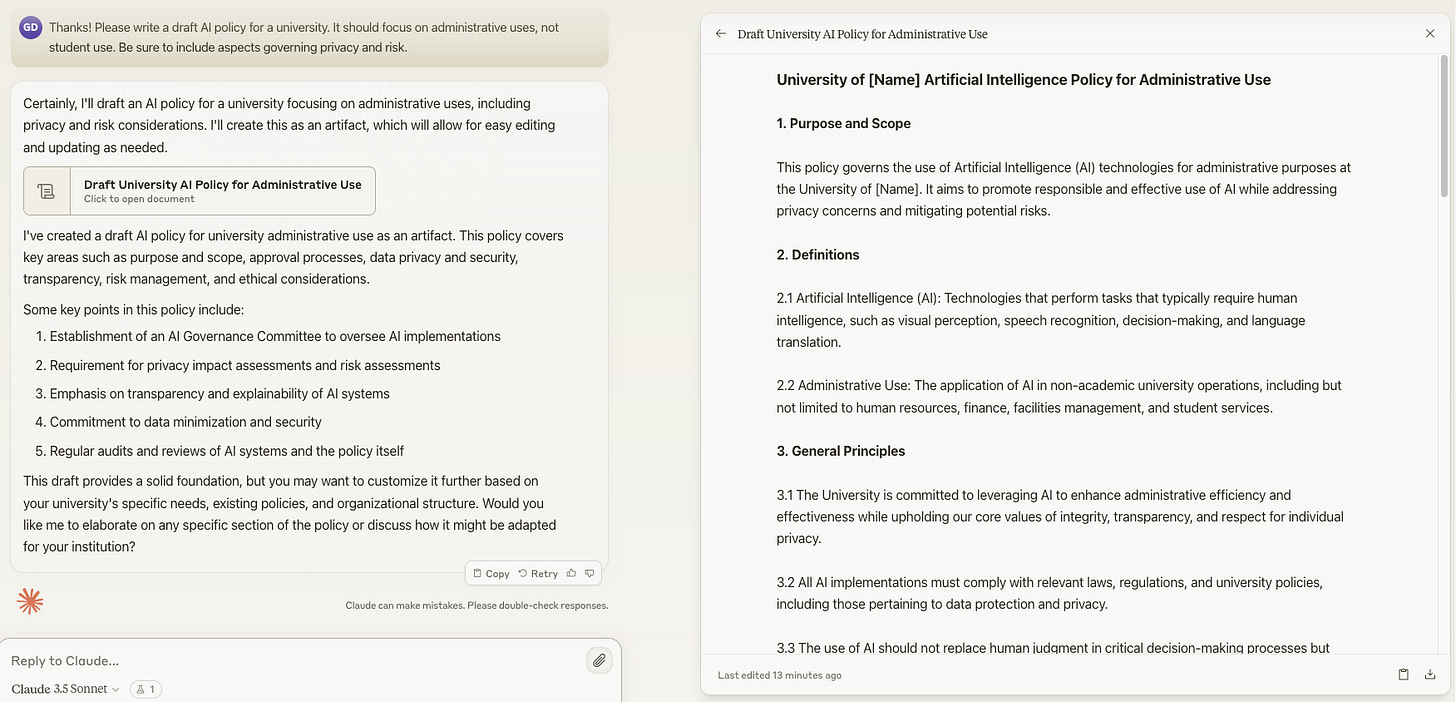If you haven't checked out Claude 3.5 Sonnet, you should. I've been playing with it lately and have been very impressed. It's been fast, accurate, and comprehensive in my testing. I've been mostly using it to help with this newsletter and with my podcast "Live Well and Flourish" (https://www.livewellandflourish.com/).
As I've mentioned before, I don't use AI to write for me, but I do use it extensively to help me produce better documents primarily through asking AI to critique my writing. I also use AI quite a bit to help me develop ideas. Claude 3.5 Sonnet has been awesome with these tasks. I ran the same prompt through 3.5 Sonnet and 3.0 Opus and Sonnet was much, much faster. In my opinion, the results were also better in 3.5 Sonnet. Impressive ...
To some extent, Claude 3.5 Sonnet is a response to OpenAI's ChatGPT4o, which is OpenAI's latest model. Both are designed to improve the intelligence to cost (and speed) ratio. Claude 3.5 Sonnet certainly meets that goal. According to Anthropic, 3.5 Sonnet is twice as fast as Claude 3 Opus while also being more intelligent. Check out the chart below, which I pulled from Anthropic's website (https://www.anthropic.com/news/claude-3-5-sonnet).
Source: https://www.anthropic.com/news/claude-3-5-sonnet
As you can see, Claude 3.5 Sonnet is less expensive and more intelligent that Claude 3.0 Opus. Claude 3.5 Sonnet also outscores Opus 3.0 across the board on tasks ranging from graduate level reasoning to coding and math problem solving. Although I haven't tested this yet, Anthropic also claims that 3.5 is better than 3.0 Opus on vision benchmarks.
Claude adds Artifacts
In the same announcement, Anthropic also announced Artifacts. When you ask Claude to generate content, the content appears in a separate window to the right of the conversation. Check out the example below.
The conversation is on the right and the artifact is on the left. In this case, the artifact is a critique of an article I wrote for AI Goes to College. This is much more useful than it might seem on the surface. It's quite helpful to be able to scroll the output separately from the conversation.
Here's another example that shows a more complete artifact. This time I asked Claude 3.5 Sonnet to create a draft AI policy for a university that focuses on administrative use.
As you proceed with the chat, the Artifact will update. You can go back to earlier parts of the conversation and view those Artifacts by clicking where it says "Click here to open document." Artifacts are available for all three current Claude models (3.0 Haiku, 3.5 Sonnet, and 3.0 Opus).
The generative AI arms race continues, which is a good thing for users. It will be interesting to see how OpenAI and Google respond to Claude 3.5 Sonnet (and they will). I'm really curious to see how Claude 3.5 Opus stacks up when it's released.
So, will I switch over to Claude 3.5 Sonnet? When I'm using Claude, absolutely I will. I see no reason to use Opus at the moment. That being said, I'll continue to use ChatGPT and Gemini as well, depending on the task. (I'll write an article about how I decide which tool to use soon.)
What do you think of Claude 3.5 Sonnet? Let me know at craig@AIGoesToCollege.com or leave a message at https://www.aigoestocollege.com/.







